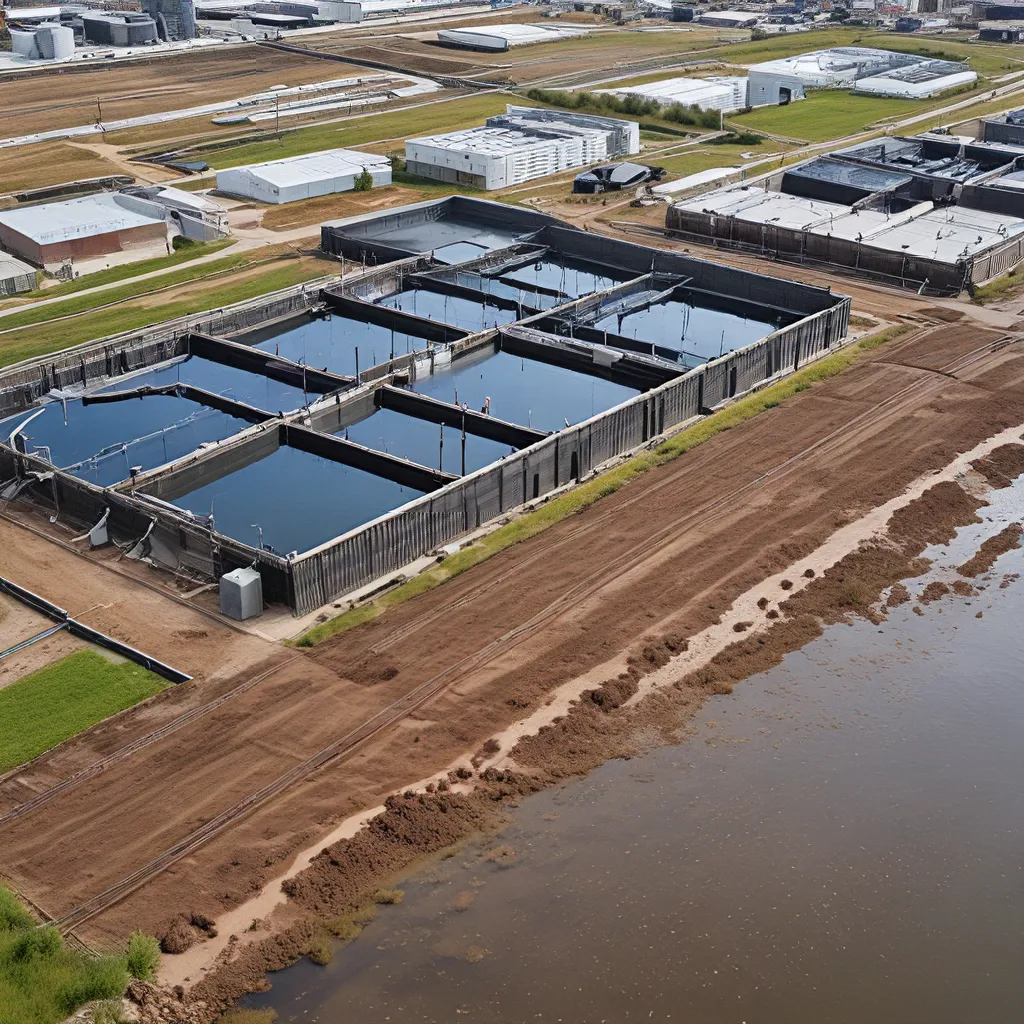
As someone who has always been fascinated by the wonders of science and technology, I can’t help but be intrigued by the incredible potential of bioelectrochemical systems (BES) in the realm of wastewater treatment. Let me take you on a journey to explore how these cutting-edge systems are revolutionizing the way we approach one of the most critical challenges facing our world – the sustainable management of our precious water resources.
Unlocking the Power of Microbes
At the heart of BES technology lies the ingenious ability to harness the natural processes of microorganisms. These tiny living entities, often invisible to the naked eye, possess an incredible capacity to transform and recycle the very waste that we humans produce. It’s as if Mother Nature is offering us a helping hand, if only we’re willing to listen and learn.
Picture this: a wastewater treatment plant, bustling with activity, where microbes are the unsung heroes, working tirelessly to break down the complex compounds and pollutants present in the water. These remarkable microorganisms, when given the right conditions, can literally transform what we perceive as waste into valuable resources – energy, clean water, and even biofuels.
The Bioelectrochemical Breakthrough
The real magic happens when we combine these microbial superpowers with the principles of electrochemistry. BES technology integrates the natural abilities of microbes with specialized electrodes, creating a symbiotic relationship that amplifies the efficiency and versatility of wastewater treatment.
Imagine a system where the microbes, fueled by the organic matter in the wastewater, generate electrons that can then be captured and harnessed to power various processes. This not only enables the removal of contaminants but also the production of renewable energy and the recovery of valuable resources, such as nutrients and metals, from the wastewater stream.
Cutting-edge research has shown that BES can be tailored to address a wide range of wastewater challenges, from the treatment of industrial effluents to the recovery of valuable resources like phosphorus and nitrogen. And the best part? These systems can operate in a self-sustaining manner, minimizing the need for external energy inputs and making them a truly sustainable solution.
Embracing the Circular Economy
As we grapple with the ever-growing demands on our water resources, the concept of a circular economy has become increasingly crucial. BES technology aligns perfectly with this holistic approach, where waste is no longer seen as a problem, but rather as a valuable resource to be reclaimed and repurposed.
The US government has recognized the immense potential of BES, and is actively investing in research and development to further advance this game-changing technology. By harnessing the power of microbes and electrochemistry, we can not only purify wastewater but also recover precious resources that would otherwise be lost.
Imagine a future where wastewater treatment plants are transformed into resource recovery hubs, where every drop of water, every nutrient, and every molecule of energy is captured and repurposed. It’s a vision that’s no longer just a dream, but a reality that’s rapidly taking shape, thanks to the remarkable advancements in BES technology.
Overcoming Challenges and Embracing the Future
Of course, as with any groundbreaking innovation, there are still hurdles to overcome. Scaling up BES systems to handle the vast volumes of wastewater generated by our growing population, as well as ensuring cost-effectiveness and energy efficiency, are just a few of the challenges that researchers and engineers are tackling head-on.
Federal government websites and leading research institutions are actively exploring ways to optimize BES performance, streamline manufacturing processes, and develop innovative financing models to make this technology more accessible and viable for widespread adoption.
But I’m confident that with the relentless efforts of dedicated scientists, engineers, and policymakers, we’ll continue to witness the steady progression of BES technology. Who knows, perhaps one day you’ll be able to visit your local wastewater treatment facility and see these amazing systems in action, transforming the very waste that we produce into a bounty of renewable resources.
It’s an exciting time to be alive, my friends, and I can’t wait to see what the future holds for the incredible world of bioelectrochemical systems. So, let’s dive in, explore the possibilities, and play our part in ushering in a more sustainable, resource-rich future for all.